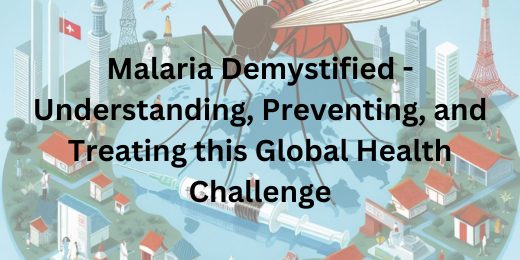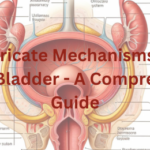Malaria Prevention Strategies
Malaria, a mosquito-borne disease, has plagued humanity for centuries. It is caused by the Plasmodium parasite, transmitted through the bite of infected Anopheles mosquitoes. Understanding the intricacies of malaria is vital in combating this global health challenge. Symptoms range from mild flu-like discomfort to severe complications, with the latter often proving fatal if left untreated.
To address this, comprehensive Malaria Prevention Strategies have been developed. These encompass vector control measures, such as bed nets treated with insecticides, indoor residual spraying, and mosquito habitat management. Additionally, preventive medications like antimalarial drugs are crucial in endemic areas.
Public health campaigns also educate communities on personal protective measures like wearing long-sleeved clothing and using mosquito repellents. By demystifying the complexities of malaria and promoting awareness of these Malaria Prevention Strategies, we can collectively work towards reducing the burden of this disease and ultimately, saving lives.
Global Impact and Prevalence
Malaria’s global impact is profound, affecting millions of lives annually. It’s a leading cause of illness and death in many tropical and subtropical regions. Sub-Saharan Africa bears the heaviest burden, accounting for over 90% of global malaria cases. Vulnerable populations, particularly children under five and pregnant women, are at higher risk.
The prevalence of malaria is exacerbated by factors like inadequate healthcare infrastructure, socio-economic disparities, and limited access to preventive measures. Implementing effective Malaria Prevention Strategies is imperative in combating this widespread health challenge. Interventions such as insecticide-treated bed nets, indoor residual spraying, and antimalarial medications play a pivotal role.
Furthermore, community education and engagement are vital in raising awareness about preventive measures. By comprehending the extensive global impact of malaria and strategically applying Malaria Prevention Strategies, we can work towards alleviating the suffering caused by this debilitating disease on a worldwide scale. Similarly, tuberculosis is an infectious disease caused by the Mycobacterium tuberculosis bacteria that primarily affects the lungs. Its symptoms include coughing, weight loss, and fatigue.
Understanding Malaria Parasites and Transmission
To combat malaria, understanding its parasites and transmission is crucial. Malaria is caused by Plasmodium parasites, with five species affecting humans. Among these, Plasmodium falciparum is the most lethal. When an infected female Anopheles mosquito bites, it injects these parasites into the bloodstream.
From there, they travel to the liver, multiply, and re-enter the bloodstream, causing the characteristic symptoms. This intricate life cycle makes targeting both the mosquito vector and the parasite essential in Malaria Prevention Strategies. Mosquito control measures, like bed nets and indoor spraying, reduce transmission.
Antimalarial drugs, which kill the parasites, are also pivotal. Understanding this cycle and employing effective Malaria Prevention Strategies not only saves lives but also contributes to the global fight against this devastating disease. Through continued research and public health efforts, we aim to further refine and enhance our approach to malaria prevention. Likewise, the effects of mumps include painful swelling of the salivary glands, fever, and potential complications such as orchitis or meningitis, underscoring the importance of vaccination for prevention.
Malaria Prevention Strategies
Effective Malaria Prevention Strategies are pivotal in combating this global health challenge. The foremost approach involves vector control. This includes the use of insecticide-treated bed nets and indoor residual spraying, which significantly reduce mosquito bites, thus lowering the risk of infection.
Furthermore, administering preventive antimalarial drugs, particularly in high-risk areas, is a crucial measure. Community engagement and education play an equally vital role. By disseminating information about personal protective measures like wearing long-sleeved clothing and using mosquito repellents, communities can actively participate in their own defense against malaria.
Additionally, environmental management, which focuses on reducing mosquito breeding sites, complements these strategies. By combining these multifaceted approaches, we create a robust defence against malaria. It’s through a coordinated effort, encompassing both individual and community-wide actions, that we can make significant strides in reducing the prevalence of this disease and ultimately, saving lives. On a similar note, vaccination is crucial in preventing chickenpox, a disease caused by the varicella-zoster virus that manifests as itchy skin rashes, fever, and flu-like symptoms.
Treatment and Management Approaches
When it comes to malaria, prompt and appropriate treatment is paramount. The choice of treatment depends on several factors including the type of Plasmodium parasite involved, the severity of symptoms, and the patient’s age and health status. For uncomplicated cases, Artemisinin-based Combination Therapies (ACTs) are the frontline treatment.
They are highly effective in clearing the parasites from the bloodstream. In severe cases, especially those involving Plasmodium falciparum, hospitalization and intravenous antimalarial medications may be necessary. Additionally, supportive care including fluids, electrolytes, and blood transfusions might be required.
Beyond treatment, it’s crucial to focus on management approaches that prevent recurrent infections. This involves follow-up care, health education, and, in some cases, intermittent preventive treatment for vulnerable populations.
By employing these comprehensive Malaria Prevention Strategies alongside effective treatment measures, we can significantly reduce the burden of this disease and work towards a malaria-free future.
Emerging Research and Future Prospects
As we progress in the fight against malaria, emerging research brings hope for more effective Malaria Prevention Strategies in the future. Scientists are exploring innovative approaches, including genetically modified mosquitoes that are resistant to the Plasmodium parasite, which could significantly reduce transmission rates.
Additionally, advancements in vaccine development show promise. The RTS,S/AS01 vaccine, for instance, has shown encouraging results in clinical trials, providing partial protection against malaria. Furthermore, there’s growing interest in the use of drones for delivering medical supplies and conducting aerial spraying of insecticides in remote or hard-to-reach areas.
This could revolutionise the way we implement vector control measures. By staying at the forefront of research and harnessing technological advancements, we stand a better chance of not only preventing, but eventually eradicating, this global health challenge. It’s through these ongoing efforts that we pave the way for a malaria-free future.


